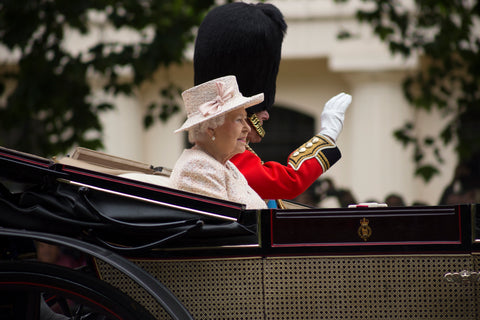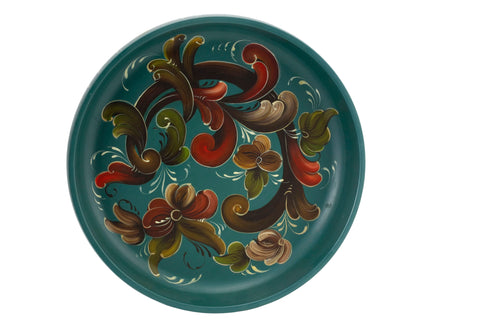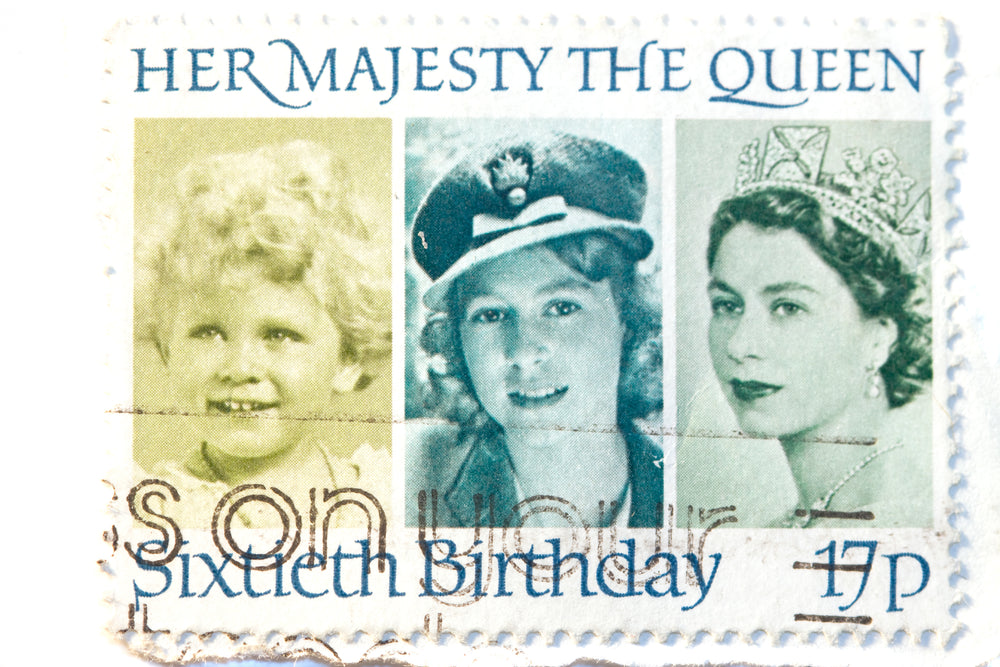Queen Elizabeth II was born to parents Prince Albert, Duke of York, and Elizabeth, Duchess of York (they later became King George VI and Queen Elizabeth The Queen Mother, respectively). She ascended to the throne at a very young age of 25 on February 6, 1952, and ruled for 70 years until she died on September 8, 2022. She was ruling 32 sovereign states and remained the monarch of 15 realms till the time of her death. Her reign saw many significant historical events. She was loved by the people, which is why she reigned for so long.
She was loved by her people, who would like to keep memories from her reign. Creating commemorative plates is a beautiful way to pay homage to the late queen and to remember her always.
What are Commemorative Plates?

Commemorative plates are beautiful decorative items especially designed to honour special events, people or places. They are often made of porcelain, ceramic, glass, etc., and bear intricate designs or images that capture the essence of the occasion being commemorated. These are timeless mementos that can be displayed in offices or home as a way to pay tribute to significant milestones or achievements of certain occasions.
The commemorative plate featuring Queen Elizabeth II is a symbol of respect and admiration for the monarch who reigned for seven decades. These plates have been created to commemorate special events such as jubilees, royal weddings, or other significant milestones in her reign. They have been crafted with intricate detail and adorned with elegant designs. These plates may not only be used as decorative pieces but also as historical artifacts that capture moments in time within the British monarchy. Every plate tells a unique story and reveals to us the legacy of Queen Elizabeth II through the years.
Significance of Commemorative Plates for Royalty
Historical Significance
Commemorative plates have a rich historical significance, dating back centuries as cherished mementos of significant events and figures. From royal weddings to coronations and from national celebrations to cultural milestones, these plates serve as tangible reminders of crucial moments in history. They not only capture the essence of the occasion being commemorated but also reflect the values, traditions, and aspirations of the era in which they were created.
Artistic Expression
In addition to their historical importance, commemorative plates are also celebrated for their artistic merit and craftsmanship. Skilled artisans and designers use various techniques, such as hand-painting, decoupage, and gilding, to create intricate and visually stunning designs. Each plate is a masterpiece of creativity and skill, showcasing the talent of its creator. They are often adorned with delicate floral motifs, intricate filigree patterns, or lifelike portraits, which captivate the collectors.
Collector's Items
Commemorative plates hold a special allure for collectors, who prize them for their historical significance, aesthetic appeal, and investment value. Collectors often seek out rare or limited-edition plates featuring iconic events, renowned personalities, or unique artistic styles. They meticulously catalogue and display their collections, taking pride in preserving these tangible links to the past. As the years pass, commemorative plates gain sentimental and monetary value and become cherished heirlooms that are passed down through generations.
Personal Connection
Beyond their historical and artistic significance, commemorative plates hold a deep personal meaning for many individuals. Whether received as gifts, inherited from loved ones, or acquired to mark significant milestones in their own lives, these plates become cherished possessions imbued with memories and emotions. They act as tangible reminders of cherished moments, reflecting the joys, triumphs, and challenges of the human experience.
Queen Elizabeth II

Queen Elizabeth II was born to parents Prince Albert, Duke of York and Elizabeth, Duchess of York (they later became King George VI and Queen Elizabeth The Queen Mother respectively). On February 6, 1952, at the very young age of 25, she took the throne and ruled for 70 years, until her death on September 8, 2022. Numerous important historical events occurred during her reign. She ruled for such a long time because the people adored her.
Some Important Milestones in Her Life
- Birth: April 21, 1926, in Mayfair, London.
- Accession to the Throne: February 6, 1952, following the death of her father, King George VI.
- Coronation: June 2, 1953, at Westminster Abbey, London.
- Marriage: November 20, 1947, to Philip Mountbatten, Duke of Edinburgh.
- Birth of Children: Charles, Anne, Andrew, and Edward.
- Longest-Reigning Monarch: Surpassed Queen Victoria's record on September 9, 2015.
- Platinum Jubilee: Celebrated in 2022, marking 70 years on the throne.
- Death: September 8, 2022, at Balmoral Castle.
Commemorative Plates Details
Commemorative plates are made from different materials. Some common materials include:
Porcelain

Porcelain is often chosen for its elegance, durability and ability to showcase intricate designs and vibrant colours. Commemorative plates made from porcelain are highly prized for their timeless beauty and sophistication. They are often adorned with detailed images and intricate patterns, which makes them ideal for commemorating significant events, milestones, and historical figures. They can be displayed in a cabinet or used as decorative pieces. Porcelain commemorative plates add a touch of luxury to any collection.
Ceramic
Ceramic plates offer versatility in design and style, catering to a broad range of tastes and preferences. From fine China to rustic pottery, ceramic commemorative plates come in various shapes, sizes, and finishes. They can feature hand-painted designs, printed images, or embossed patterns. They are suitable for commemorating diverse occasions and themes. Ceramic plates are cherished for their durability and functionality and are a popular choice for both decorative display and everyday use.
Glass
Glass plates provide a modern and sleek option for commemorative items. They often have a transparent or translucent appearance, which allows artists to create unique etched or printed designs. Glass commemorative plates display elegance and sophistication and are ideal for commemorating special events or achievements. While they may require delicate handling due to their fragile nature, glass plates are prized for their contemporary aesthetic and ability to capture light, which adds a touch of sparkle to any collection.
Metal

Metal plates such as those made from brass, pewter or silver, offer a traditional and luxurious option for commemorative pieces. They are durable and have a timeless appeal. Metal plates are often engraved or embossed with intricate designs and patterns. They are highly valued for their craftsmanship and making them prized heirlooms or collector's items. Metal commemorative plates symbolize tradition and prestige, making them ideal for honouring significant individuals, organizations, or historical events.
Plastic
Plastic plates serve as practical options for mass-produced or promotional commemorative items. They are lightweight, affordable and versatile. They are great for a variety of purposes and occasions. Plastic commemorative plates come in a wide range of colours, shapes and sizes which allows for easy customization and personalisation. While they may not offer the same level of durability or elegance as other materials, plastic plates are valued for their affordability. They, too, are popular choices for commemorating events, promotions, or campaigns.


 Christmas 2025
Christmas 2025
 Frozen Food
Frozen Food
 Baking
Baking
 Beans, Peas, Soups & Tins
Beans, Peas, Soups & Tins
 Biscuits, Crackers & Cookies
Biscuits, Crackers & Cookies
 Candy / Sweets
Candy / Sweets
 Crisps & Snacks
Crisps & Snacks
 Chemist / Pharmacy
Chemist / Pharmacy
 Desserts
Desserts
 Gravy, Stock & Paste
Gravy, Stock & Paste
 Haggis
Haggis
 Indian Sauces, Paste and Pickle
Indian Sauces, Paste and Pickle
 Jams & Preserves
Jams & Preserves
 Poppy Appeal
Poppy Appeal
 Pot Noodles & Super Noodles
Pot Noodles & Super Noodles
 Scone Mix
Scone Mix
 Gluten-Free / Free From
Gluten-Free / Free From
 Tea Accessories
Tea Accessories
 Teapot & Tea sets
Teapot & Tea sets
 Tea For One
Tea For One
 Sugar & Creamer
Sugar & Creamer
 Tableware
Tableware
 Serveware
Serveware
 Plates & Trays
Plates & Trays
 Bowls
Bowls
 Cups & Saucers
Cups & Saucers
 Mugs
Mugs
 Silverware
Silverware
 Dinnerware - Accessories
Dinnerware - Accessories
 Dinnerware - For Pets
Dinnerware - For Pets
 Victoria Eggs - Hand-Drawn UK Homeware
Victoria Eggs - Hand-Drawn UK Homeware
 Jewelry & Accessories
Jewelry & Accessories
 Sale
Sale
 Christmas Gifts
Christmas Gifts

